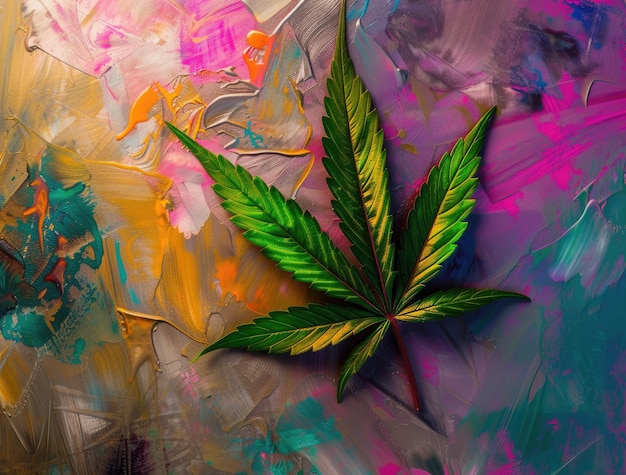
The world of design has been experiencing a fascinating shift in recent years, thanks to the influence of cannabis culture. This isn’t just a passing fad, but a significant change in how designers think about and approach their work, inspired by the aesthetics and values of cannabis culture.
Imagine walking down the busy streets of California, where seed banks proudly display the state’s rich cannabis heritage. Now, picture the sleek studios of modern designers. This mix of old and new, natural and man-made, is changing the way we see the world around us.
Cannabis has a long history of intertwining with art and design. This relationship goes back to ancient times, where cannabis was not just a plant, but a symbol of cultural and creative expression. In ancient Egypt, cannabis was linked with spiritual rituals, and its imagery can be found in religious artifacts. In Asian cultures, particularly in China and India, cannabis held a sacred place in both medicinal and spiritual realms, often represented in religious texts and paintings.
Fast forward to the Middle Ages and the Renaissance, cannabis continued to make its mark, albeit more subtly. It appeared in the works of famous artists, sometimes as a hidden symbol of the counterculture or as a representation of medicinal knowledge of the time. These historical instances of cannabis in art and design lay the groundwork for understanding its evolution and its enduring influence on modern aesthetics.
Today, cannabis has evolved into a modern emblem of creativity, freedom, and rebellion against the normative boundaries of art and design. This evolution is not just a transformation but a continuum of cannabis’s enduring legacy in the artistic world.
In the realm of contemporary graphic design, cannabis culture has had a profound influence. The cannabis leaf, with its unique and recognizable shape, has become a symbol of creativity and non-conformity in graphic art. This imagery is now being used in a variety of contexts, from corporate branding to social media campaigns, showcasing its versatility and appeal.
Cannabis has also made its way into architecture, influencing not only the aesthetic aspects but also its functional design principles. Architects are using cannabis as a metaphor for sustainability and organic growth, integrating eco-friendly materials and green spaces into their designs.
In the fashion world, cannabis motifs are not limited to visual elements; they also influence the choice of materials and manufacturing processes. Designers are increasingly utilizing hemp, a cannabis-derived material, for its durability and environmental benefits.
The shifting legal landscape, especially in progressive regions like California, is not only influencing design aesthetics but also shaping business models and marketing strategies. Design firms and startups are increasingly focusing on cannabis-related projects, tapping into a growing market that blends lifestyle, wellness, and design.
The positive reception of cannabis-inspired design reflects a broader shift in societal attitudes towards the plant. This acceptance is not only seen in consumer products but also in public installations, art exhibitions, and media representations, where cannabis themes are being explored more openly and creatively.
In conclusion, the enduring influence of cannabis in the realm of modern design is a powerful reminder of the plant’s capacity to drive innovation and challenge conventional aesthetics. Cannabis has transcended its botanical identity to become a symbol of creativity, sustainability, and cultural evolution across multiple design disciplines. Its presence in graphic design, architecture, fashion, and beyond is not just a trend but a significant movement, reshaping our understanding of what design can convey and achieve.
By weaving its essence into various forms of artistic expression, cannabis has encouraged designers to push the boundaries of creativity, and in doing so, has opened the eyes of audiences to a world where design is not just seen but experienced in new and transformative ways. This shift goes beyond mere visual impact; it reflects a deeper societal change in how we perceive and interact with our environment and with each other.
So, how has cannabis shaped your view of design? Have you encountered any cannabis-inspired designs that challenged or changed your perspectives? By sharing these insights and experiences, we can continue to explore and appreciate the diverse and profound ways in which cannabis continues to inspire and redefine the world of design.






